Valuation requirements when funding property or assets
Date
28 July 2021
Share

Independent valuations have always been a subjective requirement that lenders condition into lending approvals as they feel necessary, or as their own policies require. This has been the case both for purchasing or raising money against plant & machinery assets, or for lending against commercial or residential property.
In recent times we have noticed a tightening of lender policies relating to valuations. The key trends are as follows:
In the asset finance market valuations are almost never required when the lender is being asked to fund the purchase of an asset from a recognised plant & machinery dealer. For these transactions, the invoice value is regarded as fair market value. However, valuations are often required by lenders when the funding request is for one of the following purposes:
Fund the purchase of an asset being purchased privately, e.g. off Trade Me or from a small dealer.
The borrower wishes to raise cash against equity in an asset already owned by the borrower.
As part of an “Review” process where the lender wants to assess their security position relative to the debt outstanding to a customer. Some lenders will require this regularly (often annually) as a condition of their lending facilities, where others will only require this when there is an “event” such as a request for additional lending or an interest only period.
Historically for many asset finance deals most lenders were prepared to accept relatively informal valuations, usually completed on an unsighted “desktop” basis by a local machinery dealer. For the borrower this was generally convenient, could be obtained quickly, and at a low cost. Local machinery dealers often knew the general condition of the customer’s fleet, have a good understanding of the value of their own assets, and would do informal valuations at little or no cost based on their relationship with the customer.
We are seeing a trend for lenders to require independent sighted valuations by a registered valuer more regularly than they once would have. These valuations generally require the valuer to sight the assets being valued (which may be a difficult task where the assets are mobile or in remote locations) and prepare a formal written report. Assets are typically prepared on either a Fair Market Value or Liquidation Value basis as specified by the lender. As well as providing a value of each asset, these reports will typically provide photographs of each asset to confirm serial numbers for the purpose of accurate registration of security, and commentary on the hours/kilometres, condition, and maintenance of each asset. Registered valuers determine a value based on the likes of comparative sales data, feedback from dealers and other valuers, and advertised sale prices for similar equipment.
From a lenders perspective this provides a higher degree of comfort as to asset value. The valuer is independent from the borrower and should not (in theory) give preference to one brand of machinery over another or provide an overstated valuation amount to keep an important client happy. The formal written reports give a higher degree of confidence around correctly registering security interests on the PPSR, and provide the lender a greater degree of confidence around the general condition and maintenance of a fleet of assets.
From a borrower’s perspective, the requirement for formal registered valuations has two main negative impacts. Firstly, they can take some time to obtain and this can slow down the funding process. There are a limited number of registered valuers in New Zealand with knowledge in each type of asset class, and some markets (such as aviation) are reliant on a handful of qualified people. It can also take considerable time and effort to physically sight a fleet of assets. It is easy for lenders to “tick the box” and request a formal sighted valuation, but much harder to physically sight a fleet of mobile assets spread over a large geographic area. Second is cost, with registered valuers typically charging on a “per asset” basis plus time and expenses which can quickly add up to thousands of dollars per valuation.
Where a formal valuation has been obtained, borrowers should discuss with their accountant whether there is value in including an asset revaluation reserve in their financial accounts. Where the value of a fleet of assets on a balance sheet has been based off IRD depreciation rates, and if the value sits well below the valuer’s fair market value, the inclusion of a realistic asset revaluation reserve can better reflect a true equity position of a business. This can help with obtaining finance approvals for a customer, as many lender credit assessments look at book value equity as a key driver of a client’s risk grade.
In the commercial and residential property markets we are also seeing some changes. Lenders typically request valuations for new builds, development funding, when refinancing another lenders debt, and when raising cash against properties already owned by borrowers. Where funding is being sought for the purpose of property purchase, or where the loan amount is relatively low compared to the property value lenders will often rely on algorithm generated valuations based on comparative sales data. Registered valuations may be required where the purchase price is higher than these computer driven models suggest, or where the property is specialised. One relatively recent change driven by main bank lenders is the requirement that valuations are ordered via a third-party channel such as Valocity. These organisations act as a “middle man” between borrower and valuer. Borrowers, or Finance New Zealand on the borrower’s behalf, request valuations via Valocity who then allocate the work to a registered valuer of their choice. This ensures independence between borrower and valuer, and in the eyes of the lender it removes risk associated with borrowers requesting a friendly valuer over which they have undue influence.
Valuation requirements will vary based on each lenders policies and their subjective view on each transaction. Some lenders also have their own internal valuation functions which reduce the requirement for external valuations where those lenders are used.
Where it is a consideration for our clients, and where is realistic to do so from a lender perspective, the Finance New Zealand team can provide advice on how to mitigate the impact of lender valuation requirements on the cost and timeframes of transactions.
Similar Posts
07 February 2024
Business finance news: The finance sector regulatory environment
Many businesses will welcome a change in government to one seen as more business friendly. Within the financial sector we expect to see the following impacts in the short term:

07 February 2024
Business finance news: The domestic economy
Business confidence has improved since late 2023 but remains a mixed bag. This mirrors what we are seeing across our own business. As we have returned from summer holidays, there seems a more optimistic attitude within our client base.


Page Links
Contact us
Finance New Zealand Limited L11 BDO Tower, 19-21 Como Street, Takapuna, Auckland 0622 PO Box 65164, Mairangi Bay 0754 T: (09) 222 0320E: info@financenz.co.nzMember of


Proud Sponsors of Auckland Rescue Helicopter Trust
Copyright Finance New Zealand Ltd 2024



